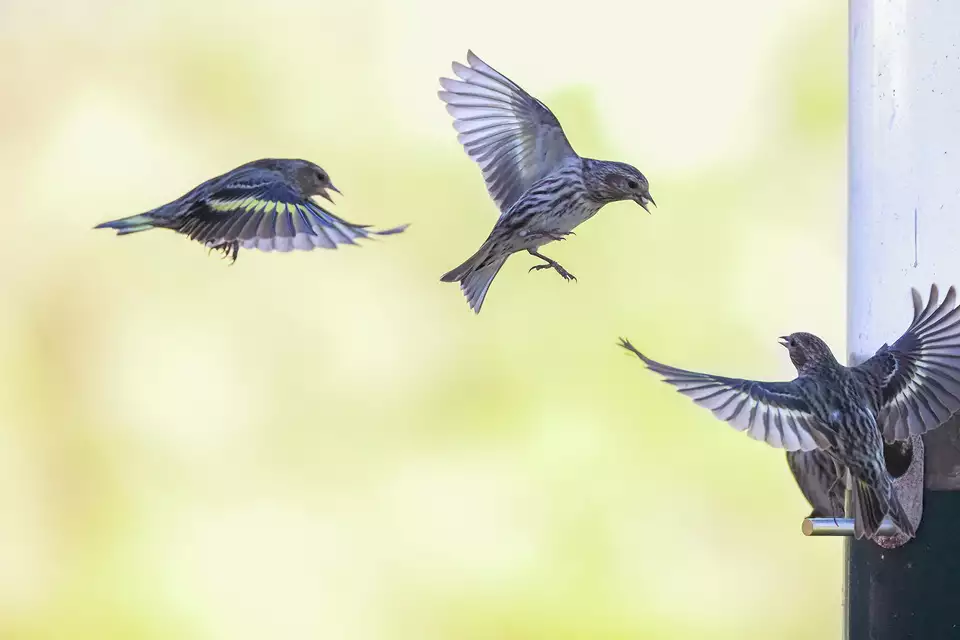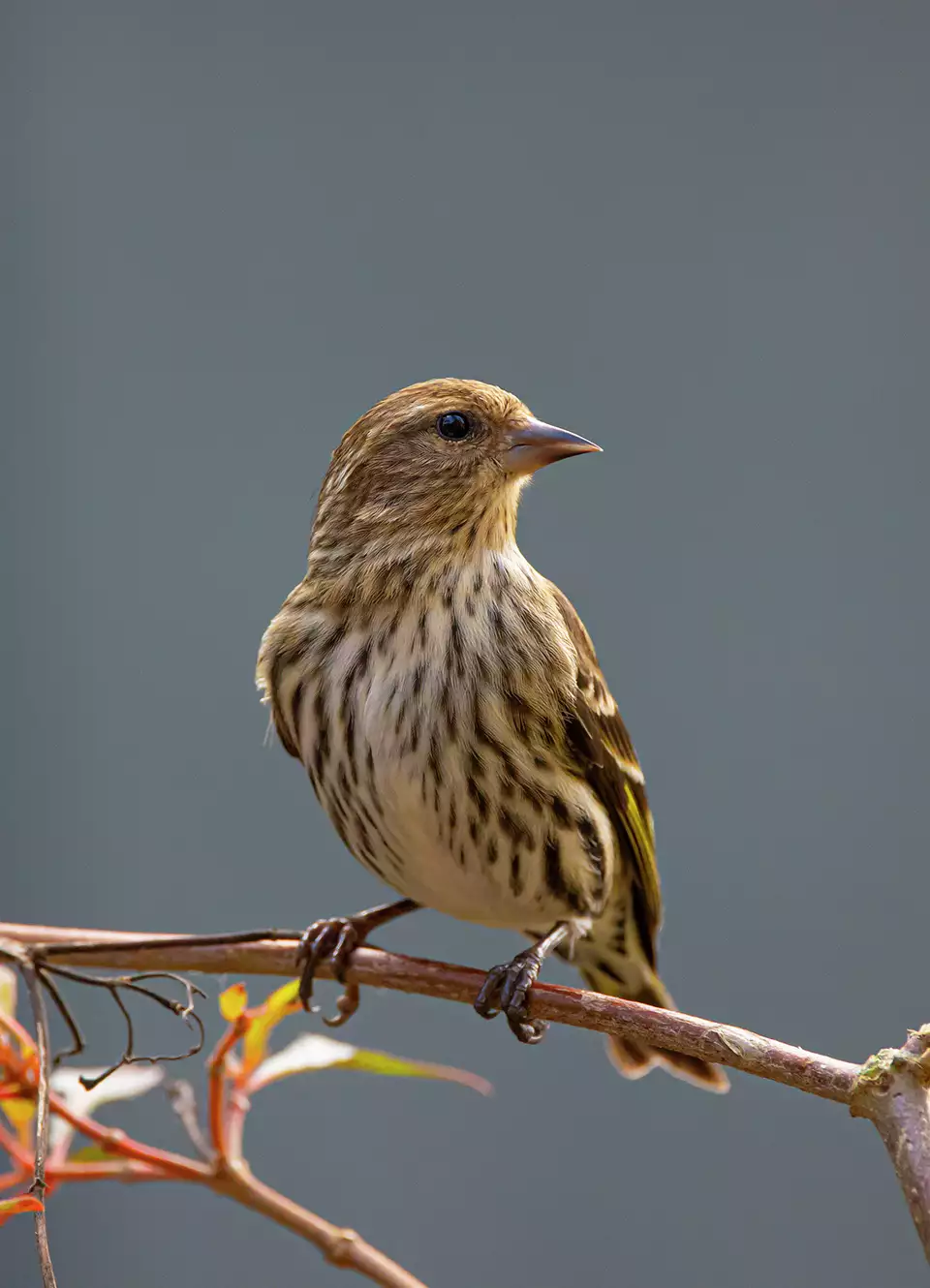Pine siskins have a willy-nilly migration pattern, so you never know when they will show up in Texas
By Gary Clark,CorrespondentFeb 10, 2024


Three years ago, massive flocks of pine siskins converged on my bird feeders. The thumb-size, streaked brown birds swirled around my head and fed out of my hand back then.
Such a southward movement of large numbers of birds into Texas is what we call an irruption, or an unusual arrival of massive flocks of a bird species in a particular geographic region.
I can't say whether we'll see crowds of pine siskins this year, but a few birds are showing up at several locations around Houston.
Pine siskins have a willy-nilly migration pattern in which flocks don't typically migrate in predictable patterns to wintering locations. Some years, huge flocks of siskins may descend into Texas. But most years, smaller flocks show up, but not necessarily in your neighborhood or mine.
The siskins won't even return to the precise forested breeding grounds where they bred the previous year in Canada and Alaska. Yet what seems to us like an erratic migratory pattern could be a concerted search for the best food sources.
My backyard bird feeders provide them with an ample supply of sunflower seeds, which probably accounts for about 30 pine siskins swirling around my yard every morning. I happily welcome them, as they seem to cooperate with kindred goldfinches at feeding perches.
What is a pine sisken?
- Pine siskins were named for their breeding grounds in northern conifers like pine trees.
- The siskin moniker has an uncertain origin but may derive from an old European word meaning chirper for their high-pitched call notes.
- The birds breed in mixed coniferous and deciduous forest in Alaska and Canada and are year-round residents in parts of the Northern and Western U.S. and even in Mexico.
- Their diet consists primarily of conifer and deciduous tree seeds in addition to grass and flower seeds, berries and insects.
- They utter high-pitched, squeaky "zree-e-e-e-e-eet" vocalizations when foraging and similar "zwee-e-eet, shr-reet" in flight.
- They’re in the same family as our resident house finches and our wintertime American goldfinches.
See Less
I also enjoy watching the hyperactive little birds crowding around the feeders while chomping on seeds with tiny pin-shaped beaks. But having such thin beaks means the birds prefer to snatch fragments of sunflower seeds that are easier to chow down. Our bird feeders are filled with cracked sunflower seeds to accommodate them.
Even though pine siskins perch en masse on feeders while eating seeds, they continuously jerk their heads around to look for hawks or other predators. Quickly sensing danger, the entire flock erupts into the trees faster than I can sip my cup of coffee.
Most of the birds currently showing up in Texas are scattered within a region encompassing Austin, Dallas, Longview and Houston. Of course, siskins usually scatter around that part of the state in winter, just not in huge flocks.
Whatever the case, it's clear that great hordes of pine siskins have not yet crowded into the state as they did three winters ago. Their winter wanderings might be unpredictable to us, but they know where they need to go.
You never know when pine siskens will show up in Texas (houstonchronicle.com) |






